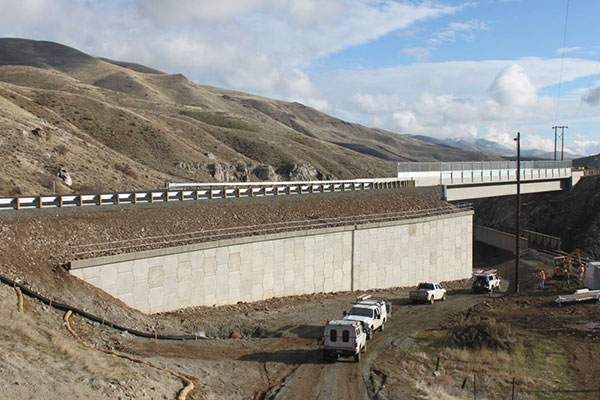December 30, 2015
Innovation of the Month: Ultra-High Performance Concrete Connections
Using ultra-high performance concrete connections between prefabricated bridge elements creates a simple, strong and durable connection that advances the routine use of precast components.
The Oregon Department of Transportation combined prefabricated elements with UHPC connections on its project to replace the Burnt River Bridge near Huntington. The agency chose the innovations to improve construction quality, boost work zone safety and cut traffic congestion on the project, which received a Highways for LIFE demonstration project grant.
Other highway agencies using UHPC connections on bridge projects include the Delaware Department of Transportation, which poured UHPC in joints between prestressed box beams on its first UHPC project, a bridge over the Pocomoke River. The Illinois Department of Transportation’s first UHPC application was on the Peoria Street Bridge project in Chicago, where crews used UHPC in the joints between full-depth deck panels.
Attend the First International Interactive Symposium on UHPC in Des Moines, Iowa, on July 18 to 20, 2016, and learn about the latest developments in UHPC.

States Share e-Construction Best Practices
Members of the Iowa and North Dakota Departments of Transportation discussed e-Construction best practices during a peer exchange December 15 and 16 in Ames, Iowa. The exchange covered software technologies, internal archiving of electronic files, information technology security solutions, mobile devices and materials management. Iowa DOT staff also described the agency’s new electronic ticketing process to document deliveries of materials to highway construction sites. A 2015 pilot project focused on e-Ticketing for asphalt mix deliveries. In 2016, the agency plans to also develop paperless ticketing for portland cement concrete.
Michigan Conducts Road Safety Audit on I-94
The Michigan Department of Transportation conducted a road safety audit on a 141-mile corridor of I-94 from Jackson County to the Indiana state line. The RSA—a formal safety performance examination by an independent, multidisciplinary team—was initiated after the corridor experienced a 193-vehicle pileup in January 2015. The RSA report includes site-specific and corridor-level recommendations to enhance safety, including the application of high-friction surface treatment on select areas. Representatives of the Michigan State Police, Federal Highway Administration, Wayne State University and other organizations helped conduct the RSA.
Read Guide on Applying Safety Analysis to Planning
Applying Safety Data and Analysis to Performance-Based Transportation Planning provides a step-by-step approach for incorporating the results of data-driven safety analysis in transportation planning and programming processes. The new FHWA guide helps state and regional planners navigate fundamental and advanced methods of safety data collection and analysis. It also demonstrates how safety analysis results can be used to develop safety goals, objectives, performance measures and targets.


